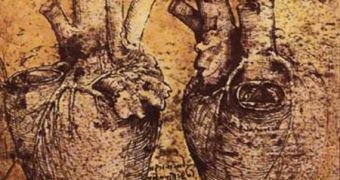Official statistics from the World Health Organization (WHO) show that as many as 20 million people are left with various types of cardiac damages following heart attacks. With the help of a newly-proposed, stem cell-based treatment, these negative effects could be eliminated for the most part.
In a new investigation, a team of scientists from the University of Bristol, in the United Kingdom, managed to discover that stem cells derived directly from the human blood cord can be used to repair damaged cardiac cells with great efficiency.
Through their very nature, heart attacks are very damaging to cardiac muscles and cells. They tend to reduce some of the functionality the cardiovascular system has overall, therefore contributing to the development of long-term health problems.
Details of the new study were published in the latest online issue of the esteemed medical journal Stem Cell Reviews & Reports. The work was financed by the National Institute for Health Research (NIHR) and the British Heart Foundation (BHF).
The Bristol team was led by the Chair of Cardiac Surgery & Translational Research in the School of Clinical Sciences at the university, professor Raimondo Ascione. The investigators say that human umbilical cord blood can produce heart muscle-like cells that can then be injected into the heart.
“We believe our study represents a significant advancement and overcomes the technical hurdle of deriving cardiac muscle-type cells from human cord blood. The method we have found has the attributes of simplicity and consistency,” Ascione explains.
“This will permit more robust manipulation of these cells towards better cell homing and cardiac repair in patients with myocardial infarction. Our research suggests that in the future stem cells derived from cord blood bank facilities might be used for repair after a heart attack,” he goes on to say.
One of the primary goals of the research was to learn how to promote the growth and multiplication of rare stem cells called CD133+. Eventually, the team learned that it's possible to use umbilical blood to feed their growth. The technique yields sufficiently-large cell cultures to allow for treating the heart.
“Regenerative medicine research in the lab, alongside studies of patients, is absolutely crucial. Right now, the damage to the heart caused by heart attack cannot be reversed. Through research like this across the UK, we hope to bring our vision of mending broken hearts to reality,” Jeremy Pearson says.
The expert holds an appointment as a professor and the associate medical director at the British Heart Foundation. The research paper was entitled “A new methodological sequence to expand and transdifferentiate human umbilical cord blood derived CD133(+) cells into a cardiomyocyte-like phenotype.”

 14 DAY TRIAL //
14 DAY TRIAL //